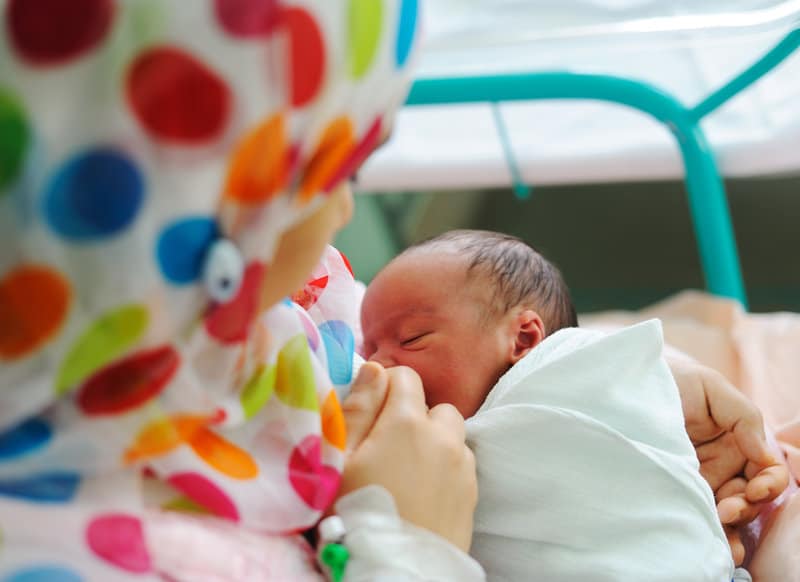Promoting Physiology During Caesarean Birth
Cheryl Samuels
Midwife
BSc (Hons) Midwifery
Project Lead All4Birth
Summary
Have you thought about your options for a caesarean birth, especially if you’re having a planned elective? There are many options and choices that you can make to help create the right environment for you and to optimise physiology and they apply to a caesarean birth just as much as any other type of birth! Having a sense of control and safety is paramount in creating a positive experience for you and your birth partner.1 Birth can be unpredictable, even with the odds stacked in your favour and it’s important to think about and discuss all eventualities and types of birth during your pregnancy. Then you are in a position of knowledge and power, making decisions that are informed and ultimately right for you as an individual.
How do I make an informed decision?
Use your B.R.A.I.N
Benefits – What are the benefits of your choice?
Risks – What are the risks of your choice?
Alternatives – Are there any alternatives to what you are being offered?
Individuality – Does the decision feel right for you personally?
Nothing – What would be the likely outcome if you decide to do nothing/decline or have more time to decide?
It is always worth asking your clinician to discuss risks in actual figures, for example ‘the risk increases from 0.1% to 0.2%’ rather than just saying the risk doubles. This tool can be used at any time during your pregnancy, birth and future parenting and gives you all the information you need to make an informed choice.
Who will be in theatre with me?
There are a number of different clinicians in theatre during a caesarean birth, each with an individual role and working as part of the multi-disciplinary team caring for you and your baby. Listed below are their main roles and responsibilities during a caesarean birth:
- Midwife – your midwife will be by your side in theatre supporting you. Their role is to monitor your baby if you have transferred from labour ward and to support you emotionally. Before the surgery begins and after you have been numbed from the waist down, your midwife will insert a catheter into your bladder, to keep your bladder empty which reduces the risk of causing damage to it. During surgery your midwife will scrub up into a theatre gown ready to receive your baby from the surgeon and if all is well bring baby to you for immediate skin to skin. They will accompany you to recovery after the surgery, help you with initiating breastfeeding and transfer you to the postnatal ward afterwards.
- Student Midwife – your midwife may have a student working with her and they will observe or take part in your care depending on where they are in their training and of course only with your consent.
- Anaesthetist – your anaesthetist will be the doctor providing you with the anaesthesia to completely numb you from the waist down. If you already have an epidural sited from labour ward, they will top this up with a stronger medication through the epidural catheter. If your are having an elective or emergency caesarean the anaesthetist will provide you with a spinal injection in theatre (into the space between your vertebrae) and this will completely numb you from the waist down and wears off after around 6-8 hours. They will also administer any medication or intravenous fluids needed during surgery and will keep a close observation on your vital signs to make sure you are well. On very rare occasions where it isn’t safe to wait for a spinal to be sited, a general anaesthetic will be recommended.
- Your partner – your partner will be given scrubs and a theatre hat to wear and will be brought into sit beside your head after the anaesthesia is in place and will be with you in recovery as well.
- Operation department practitioner (ODP) – they assist the anaesthetist in theatre.
- Obstetrician – your obstetrician is the doctor performing the surgery. They will discuss any procedure with you and gain verbal or written consent. They will be assisted by another surgeon and sometimes a consultant obstetrician depending on the circumstances.
- Scrub nurse team – your nurse scrub team assist the surgeons and make sure everything is running smoothly in theatre. There are usually 2-3 nurses and assistants in the team.
- Paediatrician – your baby’s paediatrician is present at the time of birth, if there are any concerns regarding your baby’s health. The midwife will receive your baby and take them directly to the paediatrician waiting by the resuscitaire. Sometimes there maybe another paediatrician if you are having twins or there is a trainee doctor present as well. Your baby will be brought to you for skin to skin as soon as possible.
The theatre can seem busy with people, especially if you have come from a quiet labour ward room with just your midwife and birthing partner beside you, but remember they are all there to help you and your baby to be safe and well.
What choices do I have?
There are lots of options and it’s really important to consider and discuss them with your birthing partner during pregnancy, so that they can team up with your midwife to implement them. These slight changes, however small can make all the difference to you and your experience.
- Would you like music to be played in theatre?
- Could you bring your own pillow into theatre and earlier on pop a couple of drops of aromatherapy oil on the corners to help you relax?
- Could the lights be lowered in theatre?
- Would you like the surgical drapes to be up or lowered at birth so you can see your baby being born?
- Could your partner gently lift your head up, to help you see better?
- Would you like the anaesthetist or surgeon to talk you through what is happening during the operation?
- Could your partner massage or hold your hand and stroke your arm to help you relax?
- If you are feeling overwhelmed practice some slow breathing techniques to help you feel calm. Breathe in for the count of four through your nose and out for more through your mouth.
- Could the ECG cables be placed for easy immediate skin to skin and your cannulas in your non dominant hand to make feeding and holding your baby easier?
- If all is well could the surgeon facilitate two minutes of optimal cord clamping? Go to Blood to Baby Blog for more information and research.
- Would you like immediate skin to skin with baby if all is well? Skin to skin contact helps to regulate your baby’s heart rate, breathing, temperature and boosts oxytocin release to facilitate bonding and breastfeeding.2
- Could your birth partner wear a theatre gown back to front, with openings at the front, for easy access skin to skin with baby if you’re not feeling up to it?
- Could the baby check be done in your view in theatre or the recovery area, so you can see your baby being checked and weighed?
If there is anything you do not understand or need repeating just ask your midwife. Feeling safe and informed has such an important impact on your birth experience and however you birth your baby you deserve to feel positive and empowered.
Links to resources
 Books
Books
Why Caesarean Matters – Claire Goggin https://www.pinterandmartin.com/why-caesarean-matters
 Websites
Websites
Blood to Baby – https://www.bloodtobaby.com/post/new-resource-alert-delayed-cord-clamping-at-caesarean
AIMS Association for improvements in the maternity services – https://www.aims.org.uk/
Dr Sara Wickham – https://www.sarawickham.com/
Birth Place Decisions – https://assets.nhs.uk/prod/documents/NHSE-your-choice-where-to-have-baby-first-baby-sept2018.pdf
 Social Media
Social Media
Blood to Baby Blog – https://www.instagram.com/midwifetiz/
The Positive Birth Movement – https://www.instagram.com/positivebirthmovement/
References
- Thompson G, Feeley S. The ‘trusting communion’ of positive birth: an existential perspective. In: Downe S, Byron S, eds. Squaring the Circle: normal birth research, theory and practice in a technological age. Pinter & Martin, London; 2019.
- Clarke J. An update – Skin to Skin in the Operating Theatre. Promoting skin to skin: midwifery and compassion in maternity services. https://jennythem.com/2015/05/30/an-update-skin-to-skin-in-the-operating-theatre/. Published 2015. Accessed April 8th, 2021












